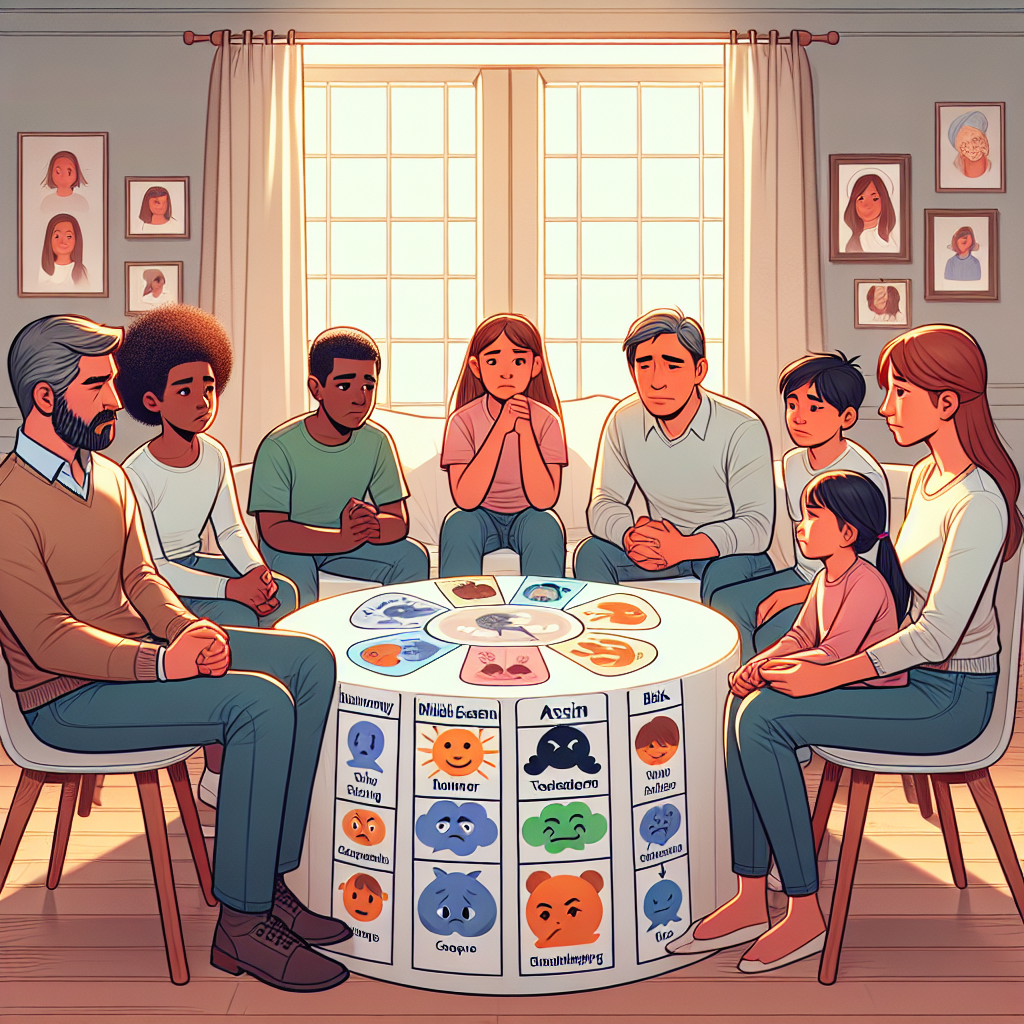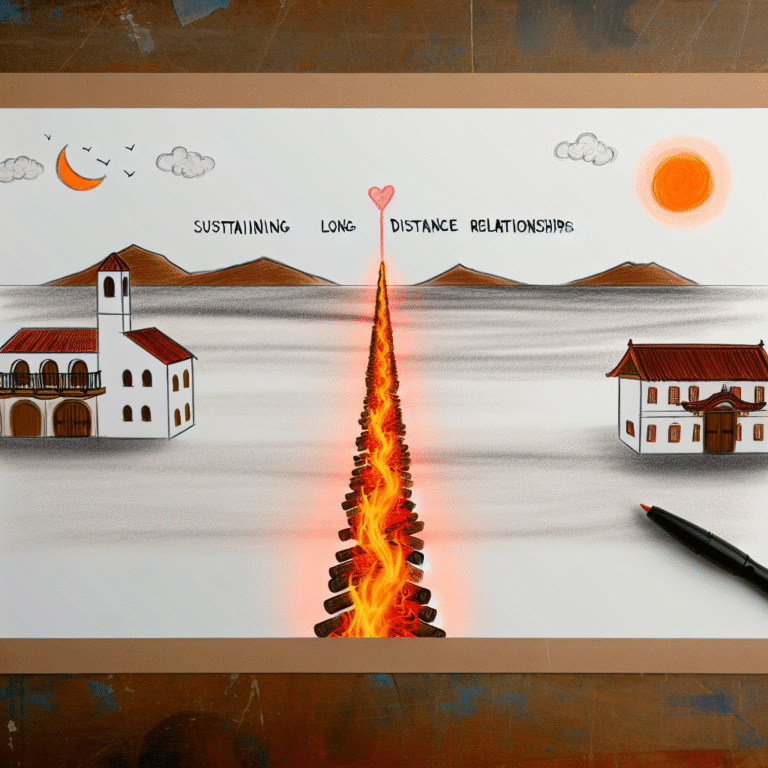
Turning Tension into Teamwork: Essential Family Conflict Resolution Techniques
Introduction
Family dynamics can often feel like a roller coaster ride—filled with ups, downs, twists, and unexpected turns. Relationships among family members can be rich in love but also fraught with tension. Studies suggest that approximately 80% of families experience some form of conflict at regular intervals. Knowing how to navigate these conflicts is not just a skill, but an essential life lesson. In this article, we will explore powerful methods for Turning Tension into Teamwork through effective family conflict resolution techniques. By transforming disputes into opportunities for growth and connection, families can build resilience and deepen their bonds.
Understanding Family Conflict
The Nature of Conflict
Family conflict arises from a myriad of sources—different personalities, values, and expectations can clash, leading to misunderstandings. A healthy family will face disagreements, but it’s vital to handle them constructively rather than destructively.
The Emotional Impact
Conflicts can trigger a range of emotions, from anger to sadness. It’s essential to recognize these feelings and address them to prevent them from escalating. Emotions during familial disagreements can often cloud judgment, making resolution challenging.
Key Techniques for Turning Tension into Teamwork
1. Open Communication
The Importance of Dialogue
Creating an environment where everyone feels comfortable expressing themselves is crucial in Turning Tension into Teamwork. Open communication fosters understanding, allowing family members to share their thoughts and feelings without fear of reprisal.
Practical Steps
- Set Aside Time: Schedule regular family meetings where everyone can voice their concerns.
- Active Listening: Encourage family members to listen to each other without interrupting. Techniques such as paraphrasing can help clarify understanding.
Case Study: The Johnson Family
The Johnsons often found themselves in heated arguments over household chores. They decided to hold a family meeting, during which everyone shared their feelings. By the end of the meeting, they created a chore chart that considered everyone’s preferences. This led to a more harmonious home and improved relationships.
Analysis of the Case Study
This case is a testament to the benefits of structured communication. The Johnson family’s proactive approach illustrates how clear dialogue can prevent resentment and cultivate teamwork.
2. Emphasize Common Goals
Building a Shared Vision
In many families, individual desires can obscure collective goals. To promote teamwork, family members should identify what they want to achieve together—whether it’s planning a vacation or improving household harmony.
Practical Steps
- Vision Board: Create a family vision board that sets shared goals and aspirations.
- Collective Decision-Making: Involve everyone in decisions that will affect the family, ensuring each member feels valued.
Case Study: The Kim Family
The Kims decided to plan a family vacation, but disagreements over destination preferences led to conflict. They held brainstorming sessions to list everyone’s ideas, ultimately creating a shared vision of an itinerary that included a bit of everyone’s wishes.
Analysis of the Case Study
The Kim family’s joint effort in decision-making emphasizes that collaboration can lead to satisfying solutions that take everyone’s preferences into account, thus boosting team spirit.
3. Establish Rules of Engagement
Guidelines for Healthy Disagreement
Having rules in place can help manage conflicts more productively. This is where Turning Tension into Teamwork becomes especially relevant.
Practical Steps
- Ground Rules: Create simple rules for family discussions, such as no shouting or personal attacks.
- Time-Outs: Allow family members to take breaks during heated discussions to cool down and collect their thoughts.
Case Study: The Martinez Family
The Martinez family had a history of shouting during arguments. They agreed to a "timeout" rule: if things got too heated, anyone could call for a pause. This rule changed the landscape of their disagreements, making conversations more constructive.
Analysis of the Case Study
By implementing a framework within which conflicts can be aired, the Martinez family turned potentially destructive tensions into constructive discussions, paving the way for teamwork.
4. Focus on Solutions, Not Problems
Shifting the Mindset
To cultivate teamwork, families should refrain from playing the blame game. Instead, focus on finding solutions to underlying issues.
Practical Steps
- Solution Brainstorming: Encourage family members to come up with multiple solutions to a problem rather than debating who is at fault.
- Action Plans: Develop step-by-step plans to address the conflict at hand.
Case Study: The Smith Family
The Smiths regularly argued about financial decisions. Instead of sizing up blame, they created a monthly budgeting session where everyone contributed ideas on spending and saving, significantly reducing their conflicts about money.
Analysis of the Case Study
The Smith family’s approach illustrates how concentrating on solutions rather than blame can transform financial discussions into collaborative efforts, reinforcing teamwork.
5. Practice Empathy
Understanding Perspectives
Empathy is a potent tool in Turning Tension into Teamwork. By genuinely trying to understand a family member’s perspective, conflicts can be approached with compassion.
Practical Steps
- Perspective-Taking: Encourage family members to articulate how others feel during disagreements.
- Empathetic Listening: Allow each member to express their feelings fully, followed by attempts to understand those feelings.
Case Study: The Torres Family
The Torres siblings frequently disagreed over sharing a room. Instead of arguing, they shared their feelings about privacy and personal space during a family meeting. This dialogue led to an empathetic understanding among them and resulted in establishing boundaries that everyone respected.
Analysis of the Case Study
The Torres family exemplified the power of empathy. Their willingness to understand each other’s feelings transformed a point of tension into a collaborative dialogue that strengthened their bond.
Conclusion
Turning Tension into Teamwork: Family Conflict Resolution Techniques are essential for fostering strong family relationships. Through open communication, emphasizing common goals, establishing rules of engagement, focusing on solutions, and practicing empathy, families can turn their conflicts into opportunities for growth.
Remember, resolving family conflicts isn’t about winning; it’s about understanding. As families invest in these techniques, they create environments where teamwork thrives, paving the way for lasting familial bonds and enhanced resilience.
FAQs
1. What should I do if family members are resistant to discussing conflicts?
Encourage open dialogue by stressing the importance of resolution and mutual respect. Consider involving a third-party mediator if necessary.
2. How can I improve communication within my family?
Schedule regular family meetings, practice active listening, and create a safe space where everyone can share their thoughts and feelings.
3. Are conflicts normal in families?
Yes, conflicts are a normal part of family life. It’s how families handle these conflicts that determines the strength of their relationships.
4. What are some signs that my family needs to work on conflict resolution?
Frequent misunderstandings, increased tension during conversations, and lingering resentment are all indicators that conflict resolution techniques could be beneficial.
5. How can we make conflict resolution a family habit?
Incorporate resolution techniques into your family culture by regularly discussing them, celebrating small victories, and continuously assessing and improving family dynamics.
By following these strategies and insights, families can successfully learn the art of Turning Tension into Teamwork: Family Conflict Resolution Techniques, ensuring healthier and happier relationships. With practice and patience, your family can transform conflicts into stepping stones that lead to deeper connections and understanding.















